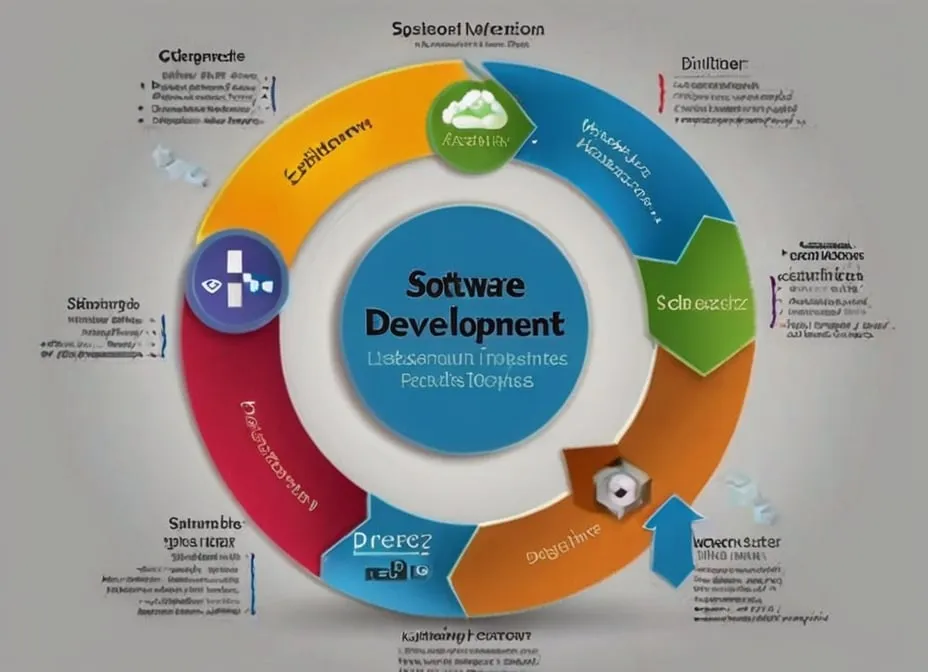The Power of Automation in Business Processes

1. Introduction to Business Process Automation
In today's fast-paced business landscape, organizations are constantly seeking ways to improve efficiency, reduce costs, and enhance customer experience. One powerful solution that has gained significant traction is business process automation (BPA). By leveraging technology to automate repetitive, time-consuming tasks, businesses can streamline their operations and unlock new levels of productivity and profitability.
1.1 Understanding Business Processes
Business processes are the series of interconnected tasks and activities that organizations perform to achieve a specific goal or deliver a product or service. These processes can range from simple, repetitive tasks like data entry or invoice processing to complex, multi-step workflows involving various departments and stakeholders.
1.2 The Need for Automation
Manual processes, while effective in the past, are often prone to human errors, delays, and inefficiencies. As businesses grow and expand, the volume of tasks and data they handle increases, making it increasingly challenging to maintain consistency, accuracy, and speed. Automation allows organizations to tackle these challenges by leveraging technology to perform tasks with precision, speed, and reliability.
1.3 Benefits of Business Process Automation
Implementing business process automation can yield numerous benefits for organizations, including:
- Increased efficiency: Automated processes can be completed faster and with fewer errors, resulting in improved productivity and reduced operational costs.
- Improved accuracy and consistency: Automated systems eliminate human errors and ensure consistent execution of tasks, leading to higher-quality outputs.
- Enhanced customer experience: By streamlining processes and reducing delays, automation can help organizations deliver faster and more reliable services, improving customer satisfaction.
- Better resource allocation: By automating repetitive tasks, organizations can free up valuable human resources to focus on more strategic and value-adding activities.
- Scalability: Automated processes can easily handle increasing volumes of work without compromising efficiency or quality, enabling businesses to scale their operations seamlessly.
1.4 Challenges in Implementing Automation
While the benefits of business process automation are compelling, organizations may face several challenges during implementation, such as:
- Resistance to change: Employees may be reluctant to adopt new technologies or fear job displacement, hindering the adoption of automation.
- Integration complexities: Integrating automation solutions with existing systems and processes can be challenging, requiring careful planning and execution.
- Data quality and accessibility: Automation relies on accurate and accessible data, which may require data cleansing and standardization efforts.
- Initial investment: Implementing automation solutions can involve significant upfront costs for software, hardware, and training, which may deter some organizations.
- Governance and compliance: Automated processes must adhere to relevant regulations, policies, and security requirements, necessitating robust governance frameworks.
Despite these challenges, organizations that effectively address them can unlock the full potential of business process automation and gain a competitive edge in their respective industries.
2. Types of Business Processes Suitable for Automation
While automation can be applied to a wide range of business processes, certain types of processes are particularly well-suited for automation. Understanding these processes can help organizations identify and prioritize automation opportunities.
2.1 Repetitive Tasks
Processes involving repetitive, rule-based tasks are prime candidates for automation. Examples include data entry, invoice processing, report generation, and routine calculations. Automating these tasks eliminates the need for manual intervention, reducing errors and improving efficiency.
2.2 Data-Intensive Processes
Processes that involve handling large volumes of data, such as data extraction, transformation, and loading (ETL), are well-suited for automation. Automated systems can quickly and accurately process vast amounts of data, freeing up human resources for more analytical and strategic tasks.
2.3 Decision-Based Processes
Certain decision-based processes, where predetermined rules and criteria govern the workflow, can be automated using technologies like business rules engines or artificial intelligence (AI). Examples include loan approval processes, credit scoring, and claim processing in insurance.
2.4 Collaborative Processes
Processes that involve collaboration and coordination among multiple stakeholders or departments can benefit from automation. Automated workflows can streamline communication, task assignment, and document sharing, improving collaboration and reducing bottlenecks.
While these types of processes are prime candidates for automation, it's important to note that not all processes may be suitable for complete automation. In some cases, a hybrid approach combining human expertise and automated systems may be more appropriate.
3. Automation Technologies and Tools
The automation landscape is constantly evolving, with new technologies and tools emerging to cater to various business needs. Here are some of the key technologies and tools used in business process automation:
3.1 Robotic Process Automation (RPA)
Robotic Process Automation (RPA) refers to the use of software robots or "bots" to automate tasks and processes. These bots can mimic human actions, such as copying and pasting data, filling out forms, and navigating applications. RPA is particularly useful for automating repetitive, rule-based tasks across multiple systems and applications.
3.2 Business Process Management (BPM) Software
Business Process Management (BPM) software enables organizations to design, model, execute, monitor, and optimize their business processes. These tools provide a centralized platform for process automation, workflow management, and process optimization. BPM software often integrates with other systems and technologies, such as RPA and AI, to enhance automation capabilities.
3.3 Artificial Intelligence (AI) and Machine Learning (ML)
Artificial Intelligence (AI) and Machine Learning (ML) are becoming increasingly important in business process automation. AI algorithms can analyze vast amounts of data, identify patterns, and make decisions or recommendations based on learned insights. ML algorithms can also adapt and improve over time, enabling more intelligent and dynamic process automation.
3.4 Integration with Other Systems
Effective business process automation often requires integration with other systems and applications within an organization. Technologies like Application Programming Interfaces (APIs), middleware, and integration platforms enable seamless data exchange and communication between automated processes and existing systems, such as enterprise resource planning (ERP), customer relationship management (CRM), and business intelligence (BI) tools.
Choosing the right automation technologies and tools depends on the specific needs, processes, and existing infrastructure of an organization. Many organizations adopt a combination of these technologies to achieve end-to-end process automation and maximize efficiency gains.
4. Implementing Business Process Automation
Implementing business process automation is a strategic initiative that requires careful planning, execution, and ongoing management. Here are the key steps involved in successfully implementing automation:
4.1 Identifying Processes for Automation
The first step is to identify the processes that are suitable for automation. Organizations should prioritize processes based on factors such as potential efficiency gains, cost savings, and strategic importance. It's essential to involve subject matter experts and process owners to ensure a comprehensive understanding of the processes.
4.2 Mapping and Documenting Processes
Before automating a process, it's crucial to map and document it thoroughly. This involves creating detailed process diagrams, identifying decision points, and capturing all the steps, inputs, and outputs. Proper documentation ensures a clear understanding of the process and facilitates effective automation.
4.3 Selecting the Right Automation Tools
Based on the process requirements and organizational needs, organizations must select the appropriate automation tools and technologies. This may involve evaluating various software solutions and considering factors such as functionality, scalability, integration capabilities, and cost.
4.4 Training and Change Management
Successful business process automation requires buy-in and active participation from employees. Organizations should invest in training programs to upskill their workforce and ensure they understand the benefits and implications of automation. Effective change management strategies, including clear communication and stakeholder engagement, are crucial for a smooth transition.
Throughout the implementation process, organizations should continuously monitor and evaluate the automation initiatives, making adjustments as needed to optimize processes and ensure alignment with business objectives.
5. Real-world Examples and Case Studies
Business process automation has been adopted across various industries, enabling organizations to streamline operations, reduce costs, and improve customer experiences. Here are some real-world examples and case studies that demonstrate the power of automation:
5.1 Automation in Finance and Accounting
Accounting and finance functions often involve repetitive tasks, such as invoice processing, data entry, and reconciliations. Companies like Walmart and Coca-Cola have implemented RPA solutions to automate these processes, resulting in significant time and cost savings, as well as improved accuracy.
5.2 Automation in Human Resources
Human resources processes, such as employee onboarding, payroll processing, and benefits administration, can be labor-intensive and prone to errors. Organizations like IBM and Accenture have leveraged automation technologies to streamline these processes, reducing administrative burdens and improving employee experiences.
5.3 Automation in Supply Chain and Logistics
Supply chain and logistics operations involve numerous processes, including order management, inventory tracking, and transportation planning. Companies like Amazon and DHL have deployed automation solutions to optimize these processes, enhancing efficiency, reducing costs, and improving delivery times.
5.4 Automation in Customer Service
Customer service processes, such as handling inquiries, processing refunds, and resolving complaints, can be time-consuming and repetitive. Companies like Zappos and Airbnb have implemented chatbots and virtual assistants to automate these processes, providing faster and more consistent customer support.
These examples demonstrate the diverse applications of business process automation across various industries and functions. By leveraging automation, organizations can achieve significant improvements in efficiency, cost savings, and customer satisfaction.
6. Best Practices and Considerations
While implementing business process automation can yield numerous benefits, organizations should consider several best practices and considerations to ensure successful adoption and long-term success.
6.1 Governance and Compliance
Automated processes must adhere to relevant regulations, policies, and compliance requirements. Organizations should establish robust governance frameworks to ensure proper oversight, monitoring, and auditing of automated processes. This includes defining roles and responsibilities, establishing controls, and maintaining audit trails.
6.2 Security and Privacy
Automated processes often involve handling sensitive data, such as customer information or financial records. Organizations must implement appropriate security measures, such as data encryption, access controls, and secure integration with other systems, to protect against data breaches and ensure compliance with privacy regulations.
6.3 Continuous Improvement and Monitoring
Business processes are dynamic and may require adjustments over time due to changing business needs, regulatory requirements, or technological advancements. Organizations should continuously monitor and analyze the performance of automated processes, identifying opportunities for improvement and making necessary adjustments.
6.4 Striking the Right Balance
While automation can significantly enhance efficiency and productivity, it's important to strike the right balance between automation and human involvement. Certain tasks may still require human judgment, creativity, or emotional intelligence, necessitating a hybrid approach where automation and human expertise complement each other.
By adhering to these best practices and considerations, organizations can maximize the benefits of business process automation while mitigating potential risks and ensuring long-term success.
7. The Future of Business Process Automation
As technology continues to evolve, the future of business process automation holds exciting possibilities and challenges. Here are some insights into the emerging trends and considerations shaping the future of automation:
7.1 Emerging Trends and Technologies
- Intelligent Automation: The integration of artificial intelligence (AI), machine learning (ML), and robotic process automation (RPA) is enabling more intelligent and adaptive automation solutions, capable of handling complex and dynamic processes.
- Hyperautomation: Hyperautomation refers to the application of advanced technologies, such as AI, ML, and RPA, to automate end-to-end processes, leveraging advanced analytics, process mining, and process orchestration.
- Low-Code/No-Code Platforms: Low-code and no-code platforms are empowering citizen developers and business users to create and automate processes without extensive programming knowledge, fostering innovation and agility.
- Cloud Automation: Cloud-based automation solutions are gaining traction, offering scalability, flexibility, and cost-efficiency, enabling organizations to automate processes across distributed environments.
- Process Mining: Process mining techniques leverage data and analytics to discover, monitor, and optimize processes, providing valuable insights for automation initiatives.
7.2 The Impact of Automation on the Workforce
As automation becomes more prevalent, concerns about its impact on employment and the workforce arise. While automation may lead to job displacement in certain industries, it also creates new job opportunities and roles focused on managing and optimizing automated processes. Organizations will need to invest in reskilling and upskilling initiatives to prepare their workforce for the changing landscape.
7.3 Ethical Considerations
The increasing adoption of automation raises ethical considerations, such as algorithmic bias, privacy concerns, and the potential for job displacement. Organizations must ensure transparency, accountability, and ethical principles are embedded into their automation initiatives to mitigate these risks and build trust with stakeholders.
7.4 Building a Future-Ready Organization
To thrive in the era of automation, organizations must cultivate a culture of innovation, agility, and continuous learning. This involves embracing new technologies, fostering cross-functional collaboration, and empowering employees to drive process improvements. By building a future-ready organization, businesses can stay ahead of the curve and leverage the full potential of automation to drive sustainable growth and competitive advantage.
As the world of business continues to evolve, the power of automation will become increasingly critical for organizations seeking to enhance efficiency, drive innovation, and deliver exceptional customer experiences. By staying ahead of emerging trends, addressing ethical considerations, and fostering a culture of continuous improvement, organizations can harness the transformative potential of business process automation and unlock new levels of success.
FAQ
- What is business process automation (BPA)? Business process automation (BPA) refers to the use of technology to automate repetitive, rule-based tasks and workflows within an organization. It involves leveraging software, algorithms, and automated systems to streamline and optimize business processes, reducing manual effort and increasing efficiency.
- What are the benefits of implementing business process automation? Some key benefits of business process automation include increased efficiency and productivity, reduced errors and costs, improved consistency and quality, better resource allocation, scalability, and enhanced customer experiences. By automating repetitive tasks, organizations can free up human resources to focus on more strategic and value-adding activities.
- What types of processes are suitable for automation? Processes that are well-suited for automation include repetitive tasks, data-intensive processes, decision-based processes with predefined rules, and collaborative processes involving multiple stakeholders or departments. Examples include data entry, invoice processing, loan approvals, supply chain management, and customer service processes.
- What are some common technologies used for business process automation? Popular technologies used for business process automation include Robotic Process Automation (RPA), Business Process Management (BPM) software, Artificial Intelligence (AI) and Machine Learning (ML), and integration platforms for connecting automated processes with existing systems.
- How can organizations ensure the successful implementation of business process automation? To ensure successful implementation, organizations should carefully identify processes for automation, thoroughly map and document processes, select the appropriate automation tools, provide employee training and change management support, and establish robust governance and security frameworks. Continuous monitoring, improvement, and striking the right balance between automation and human involvement are also crucial.










